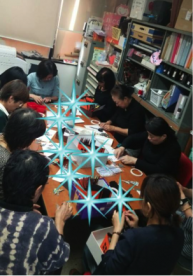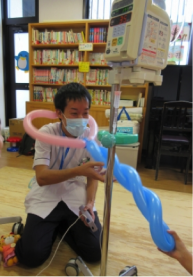Ancient kamado rice cookers, Akira Kurosawa’s former film studios, and the movement to protect Kyoto’s machiya houses are some of the myriad topics Deepest Kyoto Tour (DKT) covers on its tours—and, to my surprise, ones that have made a significant impact on my time in Japan.
DKT is an agency geared toward foreign travelers, its premise being that tourists should get to experience a Kyoto that exists behind the glimmering façades of Ginkakuji brochures. The tours cover a variety of themes, ranging from the possible connections that may exist between Judaism and Buddhism, to Kyoto’s wholesale fish markets. I have DKT to thank for the unique histories it exposed me to during my first few weeks in Kyoto, a time when I still considered visiting konbini one of the most exciting cultural experiences Japan had to offer.
From how meetings are held to how decisions are made between co-workers, my experience at DKT gave me a glimpse into how Japanese organizations are run on a day-to-day basis. It functioned both a nice complement to the broader themes we cover in the KCJS Corporations class, and as research material for an ethnography I’m writing in my language class.
My ethnography focuses on how people handle disagreements in Japan. How do members of a collectivist society in particular conduct arguments?
Amusingly, I witnessed many disagreements and cultural misunderstandings in my time as an intern, particularly between the foreign interns and the Japanese staff. What I found most curious was how the staff responded to the students when we made mistakes—it seems as if in these interactions especially, there was a tendency to repeat a statement that one believes is correct rather than go into more concrete detail as to why one believes in that particular statement.
Let’s take, for example, the time that I got lost trying to meet up with the rest of our group for one of our Saturday tours. I showed up at the JR Uzumasa station, confused as to why at five minutes to nine, I couldn’t see a single person from DKT. When I called the coordinator to ask her if the meeting was still on, she informed me that I was mistaken, as we were scheduled to meet up at the Uzumasa Tenjingawa Subway station. After some deliberation, I understood her command as instructing me to meet her at this station. So off I went, walking for about twenty minutes before I arrived at the station and again saw no one there. I called my coordinator again.
“Hi (Or perhaps more accurately, moshimoshi)! I’m finally at Tenjingawa,” I told her. “Where should I meet up with you?”
“What?!” she responded. “You mean you’re at Uzumasa Kyoruji, the Randen station, right?”
I looked around to see signs for the subway and big Helvetica letters spelling out UZUMASA TENJINGAWA. “No, I’m pretty sure I’m at the subway station.”
And this is where things got a little weird.
“But I told you to go to Kyoruji. You’re at Kyoruji, right? You’re at Kyoruji.”
“No…I’m sorry, I really don’t–”
“You’re at Kyoruji, right? We’ll meet you there. We’re taking the next train over!”
And so the conversation proceeded until I relented and told her I was indeed at Kyoruji, and that I’d see her soon.
To get myself out of this pickle, I decided to hitch a ride toward Kyoruji on the Randen train, a stop for which was right across from the subway. Lo and behold, when I boarded the platform, I saw my coordinator and her co-worker standing just on the other side of the wall that separated subway users from Randen users.
This is just one example of how a number of our interactions went, each of which made me wonder–why is it that no one appears to be listening to my reasoning? What have I done wrong? Is this normal for Japanese adults, or have I just come into contact with some quirky people recently?
If I were to go out on a limb to answer these questions, I’d say it’s a matter of age and people automatically assuming that I’m somehow mistaken in an interaction, whether because I’m younger, or perhaps because I’m a foreigner.
Ultimately, this is only a generalization based on experiences I had with about five people, not controlled for such factors as age, gender, or sample size. I haven’t spent much time observing arguments between Americans, or Americans and foreigners, either. It’s not very scientific discovery, but it’s something to think about. Has anyone else experienced arguments in Japan? Have you seen a similar trend? How have you handled disagreements while you’ve been here?


